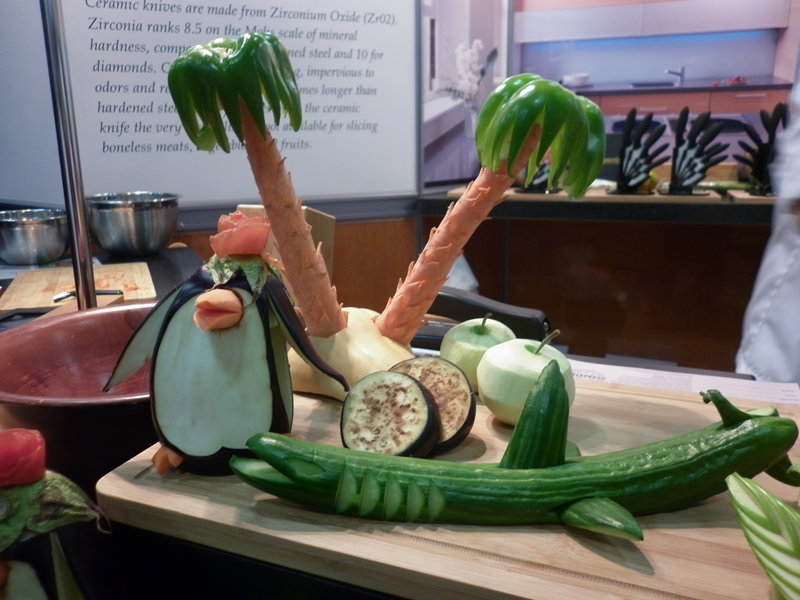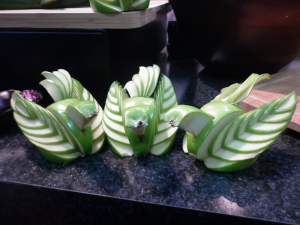By Jennifer Colbourne (The Cascade) – Email
Print Edition: October 9, 2013
The Fraser Valley Food Show came to the Tradex for its sixth year this October, featuring celebrity chefs Rob Feenie and Corbin Tomaszeski, the Great Canadian Sausage Making Competition, numerous seminars, and countless exhibits. Some of the presenters and exhibitors at the show shared some information and advice off the Food Network-beaten path.
Cheese
“Don’t use vegetable crackers – they linger on your palate. You buy a $3 box of veggie crackers and wipe out $40 worth of cheese.” – Reg Hendrickson, The Dairy Farmers of Canada, Cheese Seminar
Honey
“[Beware of] honey laundering – a lot of Chinese honeys are laundered through New Zealand, Australia, Malaysia, and different countries, and brought in as that country’s honey. Huge deal.” – Diane Stubson, KB Honey Processors/ Western Sage Honey
“Historically, [cranberries] are one of only three native fruits to North America … cranberries, blueberries, and concord grapes are the only native fruits.” – Geraldine Auston, BC Cranberry Marketing Commission
Beer
“Our bitter taste buds are at the back of the tongue. In order to properly taste your beer, you have to swallow it.” – Rick Mohabir, Just Here for the Beer, Beer and Sausage Seminar
Mead
“Mead is the ‘drink of love’ because they gave it to newlyweds to start their families. You know what I mean – get the juices flowing.” –Hannah Bernard, Campbell’s Gold Honey Farm & Meadery
Pasta sauce
“In Canada, only two conglomerates make all the pasta sauces.” – Michael Collins, The Italian Kitchen Company
Pet food
“Raw food is the biologically appropriate food for both dogs and cats, because let’s be honest – they can’t cook.” – Michael Bridgman, Just About Pets Wellness Center
Manioc
“Manioc is a root that grows in Brazil, it’s very similar to cassava—it’s in the same family—it grows there for centuries and it’s the base food for the native people … It’s a very good replacement for wheat, and it can be used for desserts as well.” –Silvia Martinelli, Otimo
Sprouted grains bread
Sprouted grains are very good for you because when you’re sprouting a grain—putting it under water—it actually acts like it’s … going to be planted, and so when it’s started, the enzymes … get rid of the phytic acid … and phytic acid [keeps] your body from absorbing nutrients.” – Janine Killian, Silver Hills Sprouted Bakery
Chocolate
“The basic difference [between American and European chocolate] is in the crunching of the cocoa bean: [European] chocolate [is so] fine, that’s why European chocolate will melt in your mouth. [The crunching process] is done sometimes for three days … making the particles of the cocoa bean so fine, that you can look at them with a microscope.” – Veve Tas, Chocolatas




